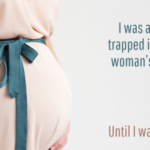A dollar goes 36% further in Mississippi than it does in the District of Columbia, according to data published last month by the Bureau of Economic Analysis.
The data tracks price fluctuations across states and regions. For example, $100 will buy you about $85 worth of goods in Hawaii, but $115 worth of goods in Mississippi.
 Differences in prices can greatly affect the amount of monty that individuals have to pay their bills, buy food, and live day-to-day.
Differences in prices can greatly affect the amount of monty that individuals have to pay their bills, buy food, and live day-to-day.
On a regional level, Honolulu, Hawaii is the most expensive place in the country, while Jonesboro, Arkansas is the least expensive. Just behind Honolulu was San Jose, California, New York City, Santa Cruz, California, San Francisco, California, and Bridgeport, Connecticut.
When factoring in salaries and wages, the difference can become even more stark. Individuals in Nebraska and those in California make about the same amount of money, but the differences in prices means that Nebraskans have a purchasing power that is about 20% higher.
From The New York Times:
Everything from the price of a cup of coffee to the cost of a house can fluctuate between, and even within, states.
A gallon of regular gas costs $2.74 in Hawaii, but just $1.82 in South Carolina.
The average Connecticut resident pays twice as much for electricity as the average Tennessee resident.
A $7 lager in San Francisco might cost you half as much in Chicago. A $5 hamburger in California may be a dollar cheaper in Nebraska.








